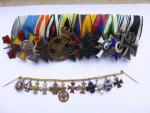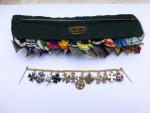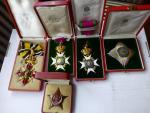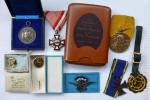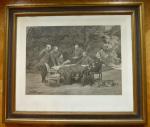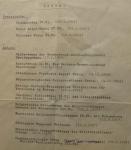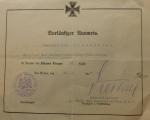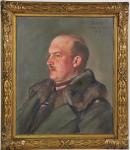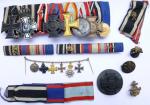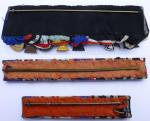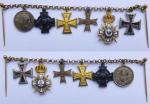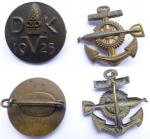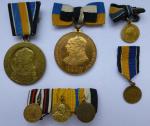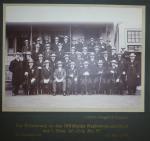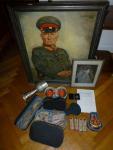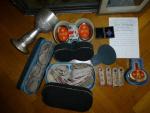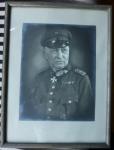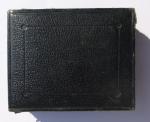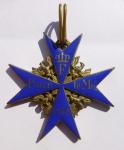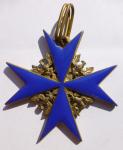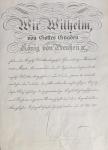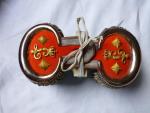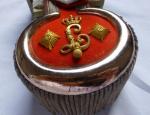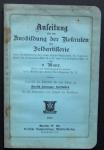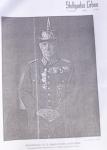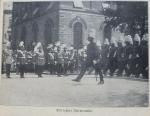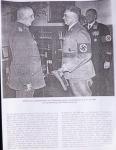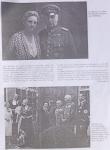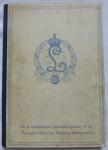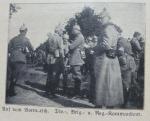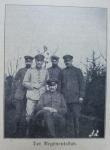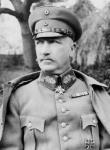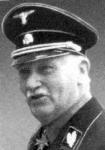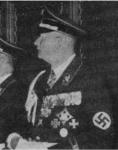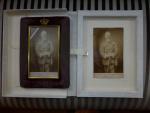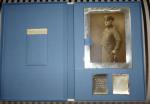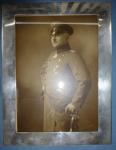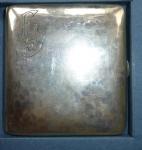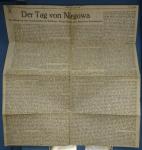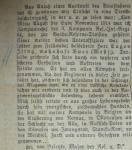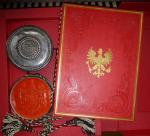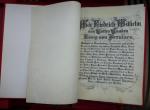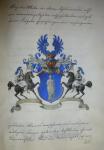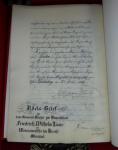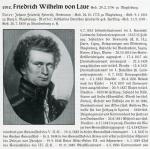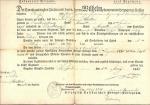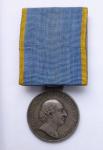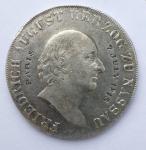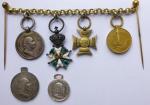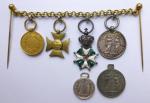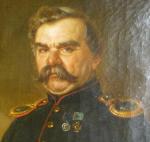-
Posts
238 -
Joined
-
Last visited
-
Days Won
6
Content Type
Profiles
Forums
Blogs
Gallery
Events
Store
Everything posted by saxcob
-

Two old medallions to ID
saxcob replied to Noor's topic in Great Britain: Research, Documentation & History
The prussian medal was offered in a similair condition at a German auction recently but remained unsold (estimate: 60 Euros). An extremely fine piece made 230 GBP at a Baldwin's auction in 2010. Condition is essential! Note how Victoria kicks off the crown of Bohemias head! -

Two old medallions to ID
saxcob replied to Noor's topic in Great Britain: Research, Documentation & History
The second one is a medal of the prussian king Frederick II. (the Great). -
The medal bar of an unknown officer shows the following awards: 1. Königreich Preußen, Eisernes Kreuz 2. Klasse 1914, OEK 1909 2. Königreich Preußen, Kreuz der Ritter mit Schwertern des Königlichen Hausordens der Hohenzollern 1861, OEK 1789 (FR 938) 3. Deutsches Reich, Kriegsverdienstkreuz 2.Klasse 1939, OEK 3836 (missing) 4. Großherzogtum Oldenburg, Friedrich August Kreuz 2. Klasse 1914, OEK 1563 5. Großherzogtum Mecklenburg-Schwerin, Militär-Verdienstkreuz 2.Klasse 1914, OEK 1352 6. Großherzogtum Hessen (-Darmstadt), Allgemeines Ehrenzeichen für Tapferkeit 1894, OEK 884 7. Deutsches Reich, Ehrenkreuz des 1.Weltkrieges/Frontkämpferkreuz, OEK 3803 (Herstellerbezeichnung: „R.V.13 Pforzheim“) 8. Königreich Preußen, Landwehr Dienstauszeichnung 2.Klasse 1913, OEK 1979 The Friedrich August Kreuz 1st class is a variety which was unknown (to me). The two pins on the last picture are still unknown to me. Any comments are more than welcome!
-
Please find below pictures of an unknown officer's medal bar who did obviously have a connection to the Grand Duchy of Oldenburg. It shows the following awards: 1. Prussia, Iron Cross 2nd class 1914, OEK 1909 2. Prussia, Red eagle 4th class, OEK 1704 3. Prussia, Dienstauszeichnungskreuz for officers, OEK 1970 4. Prussia, Zentenarmedaille (1897), OEK 1965 5. Oldenburg, Friedrich August Cross 2nd class 1914, OEK 1563 6. Oldenburg, Knights Cross 2nd class with Crown of the Haus- und Verdienstorden, OEK 1520 (missing) Since the last award is placed behind the Friedrich August Cross, it should be the civil version of the house order. Any observations are more than welcome!
-
Thank you Chris for reminding us again of the role the two Nassau regiments played at Waterloo. Many people are not aware that Hougomont was held by them alone before the English arrived. Please find below some examples of the two regimental anniversary medals and a picture of a group of recipients Recommended reading: http://gmic.co.uk/index.php/topic/61882-nassauers-at-waterloo-waterloo-medal/?hl=nassauers http://www.garethglovercollection.com/Martin_Mittelacher.htm
-
Ich möchte ich Euch folgende Ausführungen der Pauline von Württemberg (* 19. Dezember 1877 in Stuttgart; †7. Mai 1965 in Ludwigsburg) nicht vorenthalten, die in Ihren Memoiren anschaulich über die Einstellung ihres Vaters Wilhelms II., des letzten Königs von Württemberg (* 25. Februar 1848 in Stuttgart; †2. Oktober 1921 auf Schloss Bebenhausen) zu Orden berichtet: "In neuester Zeit glaubte man ohne Orden nicht mehr auskommen zu können, nachdem die in schwersten Kämpfen mit Todesmut erworbenen Auszeichnungen verschwinden mussten. Mein Vater pflegte zu sagen: „Die Orden sind nur zum Ärger derer geschaffen, die sie nicht bekommen“. Er klagte über die kostbare Zeit, die allein durch „die Verleihung der dummen Dinger“ verloren ging. Da er die Orden meist nicht kannte, war der Kammerdiener verantwortlich für das richtige Anlegen der Ordensbänder. Trotzdem erschien mein Vater mal zur Neujahrstafel mit dem Bande des Friedrich-Ordens auf der linken Schulter, es war der Gründungstag des Friedrich-Ordens, zu dem er stets angelegt wurde. Mein Mann und der Adjutant vom Dienst konnten gerade noch rechtzeitig das Übel beheben. Wozu braucht wohl eine Republik Orden und Auszeichnungen – sie braucht eben einen Verstärker, um Höchstleistungen hervorzubringen – mit dürren Worten, man treibt Handel mit dem Ehrgeiz der Menschen. In den Fußstapfen meines Vaters gehend auf diesem Gebiet, habe ich mich wohl öfter für die Dekorierung von Mitbürgern eingesetzt und dabei die erstaunlichsten Dinge erlebt, wie ein bisschen Lametta, nur in Aussicht gestellt, die klügsten und fähigsten Männer auf Touren bringen konnte. Die verschlossensten Hände und Taschen taten sich auf, andern zum Nutzen. Ich habe mich immer zutiefst geschämt, wenn mir eine Auszeichnung verliehen wurde, und sie stets nur als eine Anerkennung für die Arbeit derer, die mit mir in der Arbeit des Roten Kreuzes standen, aufgefasst."
-
Gentlemen Please find below some items which belonged to Heinrich v. Maur (Born 1863 in Ulm - Died 1947 in Stuttgart) and some additional illustrating images. Since quite some research has already been done on his career I limit myself to just referring to that: http://de.wikipedia.org/wiki/Heinrich_von_Maur http://www.geocities.com/~orion47/WEHRMACHT/HEER/General2/MAUR_HEINRICH.html http://www.wehrmacht-awards.com/forums/showpost.php?s=db463cb2679b99f51d322b26cbcd958c&p=2729974&postcount=8 The Pour le mérite is not the original one. However, the case probably is. The certificate is a copy. His epaulets as Colonel of the Feld-Artillerie-Regiment Prinz-Regent Luitpold von Bayern (2. Württembergisches) Nr. 29 are most likely unique since he was the only Colonel to wear those after the "29" was removed and replaced by the crowned "L" in 1913.
-
Portrait of Prince Regent Luitpold of Bavaria (12 March 1821 – 12 December 1912) dedicated to Heinrich Reder, since 1871 Ritter von Reder (* 19 March 1824 in Mellrichstadt; † 17. February 1909 in Munich): „In Erinnerung an den Tag von Ormes (Orleans) – 11. Oktober 1870. München den 1. März 1906 – dem Tag der 100jährigen Stiftungsfeier des Militär-Max-Josephs-Ordens. Luitpold P v Bayern“ In memory of the day of Ormes (Orleans) – 11 October 1870. Munich 1 March 1906 – the day of the 100 anniversary of the founding of the Military Order of Max Joseph. Luitpold P v Bayern“ During the battle of Orleans-Ormes on 11 October 1870 Reder received the order to place himself on the right flank with two platoons of the 8th battery of the 3rd Artillery Regiment in order to fight the enemy artillery. This 1200 meter galopping move happened under heavy fire through the deep trenches of the street “Les-Barres-Orleans”. He was awarded the Military Order of Max Joseph and thus the new title „Ritter von Reder“. In 1908 he became General Major.
-
...here are presents offered to the Reserve-Infanterie-Regiment 64 Sergeant Eugen Ising from Buer (Westphalia) a silver framed portrait of Captain von Brietzke, engraved: “In grateful memory Lutovice 18 Nov 1914 (facsimile signature: Captain v Brietzke) a cigarette case with engraved initials “EI” on the outside and “To the saviour of my husband of 18. November 1914 / In gratitude / Mrs von Brietzke / nee von Benningsen”; on the right: “Eugen Ising" The newspaper cutting mentions a letter of Brietzke in which he describes the event itself but also another episode which happened one day before (17th) when Ising conquered a cossack’s flag. The text also refers to Ising as being mentioned in the regimental history. Does anyone have that or knows more about the two of them?
-
The text describes the display of the shield as "statue of Artemis" but does not offer an explanation. The Prussian king would not give such a posh thing to his new noble friend, the latter had to commission and pay it himself. The price depended on the artists and the material he choose. When it comes to this example, the (huge!) box for the seal is only silver plated though real silver ones are known as well. So the date just refers to the day when the king signed the document even though Lange already was a “von” for more than a year. Obviously it took some time to produce it. The latter is true. He left the Prussian army and when he joined it again he had to accept the rank of a major though he was already a Turkish general and commander of a fortress at the Dardanelles.
-

EK 1914 Rightly proud, nicely displayed....
saxcob replied to Chris Boonzaier's topic in Germany: All Eras: The Iron Cross
...maybe not as posh as yours but still looked at as a family treasure: the box that his kids produced as a shrine to keep my great-grandfather's WWI awards, dedícated "to the brave warrior" ("Dem tapferen Krieger"). -
...a guy with a most amazing career and a really adventurous life. He joined the Prussian army in 1813 (fought at Wavre in 1815) and then left it again in 1824 in order to open a publishing company. He changed his mind in 1829 when he joined the Turkish army. He fought at the battle of Nisib (1839) and was the first to climb the walls of Saida (1840) together with Commodore Charles Napier. He spent a lot of time there with his close friend, the famous Moltke. In 1841 he was back in Prussian Services where he was sent to London in 1848 in order to convince Prince William (the future emperor) to return after he had fled the revolution back home. He then became his first adjutant. After such a life it is no wonder that he chose as motto for his coat of arms: "Gedenke zu leben" (Bear in mind to live)…
-
Yes, it is mine though it did not buy it on purpose. It came with objects of an other Württemberg officer of high rank. However, I could not find any connection between the two of them, no family or unit ties whatsoever. There is obvously no subesquent timely order of these salvers. Whenever one member of the officer's corps left, he would receive such a farewell present. How often that would usually happen I do not know. The noble fellow officers were probably able to afford it. These salvers seem to be exceptional though. I have never seen any other of such fine workmanship and detailed engravings. However, the price of the Brauchitsch salver might reflect more the significance of the officer himself rather than the value of the salver.
-
Pictures 1-3: Documents of the Nassovian Waterloo veteran Johann Hutter from Niedererbach (Waterloo medal certificate, Service term document, Poem dedicated the City of Wiesbaden/Capital of Nassau) Pictures 4: Nassau Waterloo medal (first of all participating states) Pictures 5: Nassau Taler (1815) engraved with the date of the Nassovian troops entering Paris Pictures 6 and 7: three varieties oft the Waterloo medal miniature Pictures 8 and 9: unknown Nassovian captain; Nassovian colonel Heinrich Friedrich Carl von Rettberg, both wearing the Waterloo medal at the first place of the bar


